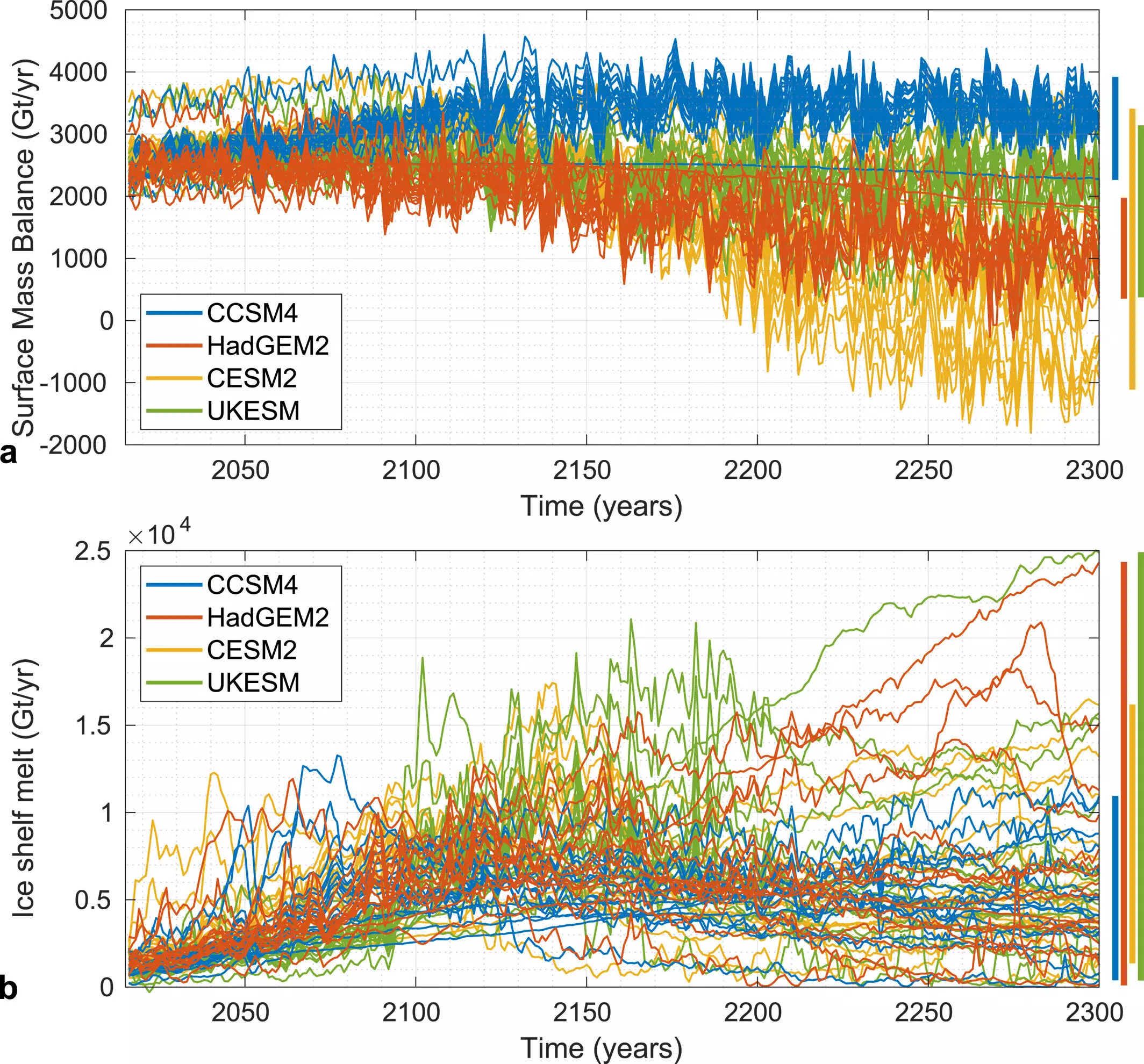Recent research spearheaded by Dartmouth College, involving the collaborative efforts of over 50 climate scientists from around the globe, has produced groundbreaking insights into the future of Antarctica’s ice sheet. For the first time, scholars have united diverse ice-sheet models to predict the long-term effects of carbon emissions on these vital glaciers spanning the next 300 years. Published in the journal *Earth’s Future*, this study reveals critical information regarding how escalating carbon emissions could drastically influence ice loss and consequently lead to global sea-level rise.
The collaborative work aggregates data from 16 different ice-sheet models and establishes a consensus that, under the continued trend of current carbon emissions, the acceleration of Antarctica’s ice loss will increasingly manifest through the 21st century. The alarming predictions indicate that after the year 2100, the historiographical certainty of the models falters, particularly for the western basins of Antarctica, which may begin to experience accelerated melting.
The researchers have determined that by the year 2200, the accumulated ice loss might contribute up to 5.5 feet to global sea levels. Furthermore, certain scenarios predict that a grave scenario could unfold where the Antarctic ice sheet might approach complete disintegration by the year 2300. Hélène Seroussi, the primary author of the study and an associate professor at Dartmouth’s Thayer School of Engineering, highlights a significant gap in climate projections, where discussions largely concentrate on impacts up to 2100, neglecting the ever-so-critical longer-term consequences.
Seroussi articulates that their study represents an essential contribution to the ongoing conversations about sea-level rise and its long-term trajectory, particularly emphasizing that regions vulnerable to rising sea levels will experience compounding effects post-2100. The findings underscore the necessity of a more significant focus on long-term forecasts and propelled actions to mitigate the ramifications of climate change.
The methodology implemented by the researchers included modeling future projections under both high and low-emission scenarios extending to 2300. Co-author Mathieu Morlighem, a Dartmouth professor of earth sciences, notes that although carbon emissions presently have a limited impact on projections for this century, the divergence between high and low-emission scenarios becomes increasingly pronounced in the century following 2100. This sharp increase in difference accentuates the urgency of current measures aimed at curtailing carbon emissions, thereby safeguarding future generations from the looming threats posed by climate change.
Understanding how Antarctica’s glaciers will fare under varying emissions levels is crucial. The timing of glacier retreats and the resultant ice loss varies when assessed against distinct ice-flow models, though all models agree that once a substantial ice loss trajectory is initiated, it becomes an unstoppable force. Seroussi stresses the inevitability of profound changes in West Antarctica’s basins, which could face complete disintegration before the next century rolls around (2200), contingent on future greenhouse gas emissions.
The implications of this study are monumental. It serves not only as a warning but also as a call to action for policymakers. Urgent measures must be taken to mitigate greenhouse gas emissions, for the fate of Antarctica’s glaciers—and consequently, global sea levels—hangs in the balance. The researchers assert that timely responses could potentially delay or prevent the catastrophic collapse of these vital ice structures.
Moreover, the groundbreaking research opens the doors for further collaborative modeling initiatives aimed at reconciling discrepancies in projections related to both the Antarctic and Greenland ice sheets. By pooling resources and focusing on higher fidelity outcomes that the models predict as most probable, scientists can enrich the understanding of these dynamic systems and bolster climate action strategies accordingly.
The Dartmouth-led study serves as a crucial turning point in climate science, emphasizing the dire need to prioritize long-term carbon emission reductions while equipping ourselves with the knowledge necessary to navigate an uncertain future dramatically influenced by our current choices.


Leave a Reply